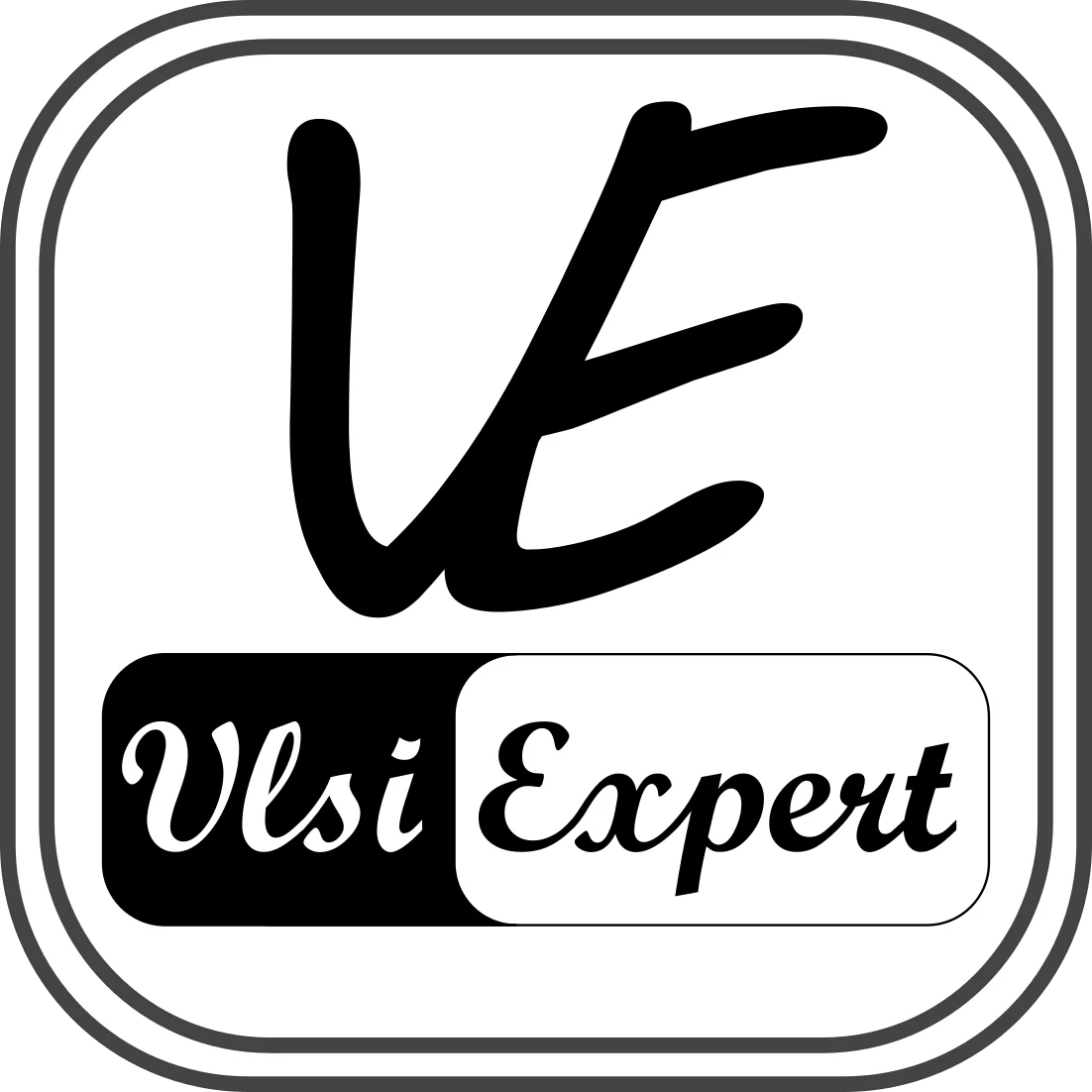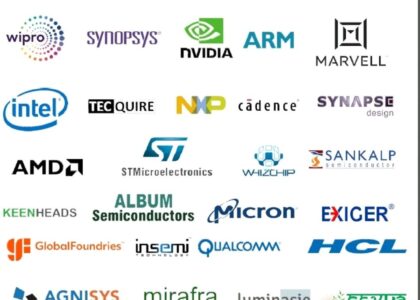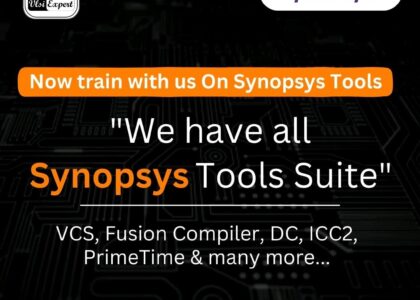🔍 Section 1: Why It’s Required — Especially in the VLSI/Semiconductor Industry
1. 🧠 Theory Without Concepts is Holding Students Back
-
Most college courses are theory-heavy, but lack proper conceptual grounding. Students often memorize equations and circuit without understanding why or how things work.
-
For example, many students know what an NMOS is, but can’t explain how it behaves across PVT corners or how it’s modeled in SPICE.
-
Sometime they are aware of simulation but no idea what’s model file.
-
In VLSI, clarity of fundamentals—like setup/hold timing, parasitic extraction, or standard cell concepts—is non-negotiable.
-
A placement-oriented program focuses on clearing conceptual confusion so students can think like engineers, not just students.
2. 🔍 Lack of Application-Based Learning
-
Students study subjects like Network Analysis, Semiconductor Physics and Devices, Digital Design, CMOS, and Verilog, but rarely understand their real-world application.
-
For instance, they may learn the truth table of a D flip-flop, but never see how it’s used in a scan chain or timing path. They even don’t know how a tool uses this (means in any automation developed by EDA).
-
VLSI education needs to be application-driven—students must know how concepts are applied in EDA tools like VCS, DC, ICC2, or Primetime.
-
Placement-oriented programs bridge this gap by linking concepts to design flows, ensuring students can connect theory to product design.
3. ⚙️ Hands-On Exposure is Missing
-
Semiconductor jobs are EDA tool-driven. Knowing how to read a waveform is different from debugging a waveform in Verdi.
-
Knowing what setup time means is different from fixing setup violations in PrimeTime.
-
Without hands-on exposure, students are not just unprepared—they’re unplaceable or replaceable.
-
Placement-oriented programs provide “guided tool access”, “project scenarios”, and industry workflows that academic labs often lack.
4. 🧑💻 Skill-Based Hiring Has Replaced Degree-Based Hiring
-
Recruiters no longer care only about degrees. They want proof of skills. (Please don’t come back and ask me that there are few companies still looking for a Degree. Frankly speaking they don’t have time to interview someone when they know that 80% or 90% candidates are not up to the mark.
-
Interviewers in today’s scenario – test whether a student can answer the concept-based questions logically OR answer it just like that. If we will make any change to the question or tweak the question – whether they answer or not, if answers – are they bluffing, or using hit and trial method. OR they become nervous.
-
They don’t care if you have good University or passed university exams with good score. They need to see that as part of skills.
-
Placement-oriented programs focus on “building and showcasing those skills”, so students can confidently clear technical interviews and assignments.
5. 🏫 The Academia-Industry Gap is Very Real
-
Colleges teach what is part of the syllabus, not what the industry uses. Most still focus on 20-year-old flows.
-
Industry, meanwhile, is working on 5nm, 3nm nodes, using advanced EDA tools and complex SoC integrations.
-
Without programs that mimic industry environments, students fall behind before they even start.
-
Placement-oriented programs act as a “bridge”—aligning what is taught with what is required.
6. 📈 High ROI on Time and Money
-
Families spend lakhs on engineering degrees, but many students end up in IT support or non-core jobs. Even I am seeing that people are doing Sales in Insurance. 🙂
-
A focused, placement-oriented program in VLSI can open doors to high-paying, core semiconductor jobs, giving better ROI on both time and money invested.
7. 📉 Mismatch Between Supply and Industry Demand
-
The semiconductor industry is booming globally and in India, but companies still report a shortage of skilled engineers.
-
The issue isn’t the number of graduates—it’s the lack of job-ready talent.
-
Placement-oriented programs focus on “quality over quantity”, producing engineers who are productive from Day 1.
💡 Section 2: How VLSI EXPERT® Is Driving Innovation & Solving These Challenges
✅ 1. “Foundation of VLSI Design” – One Course That Covers All
-
Instead of forcing a premature specialization, VLSI EXPERT® designed a course that covers:
-
RTL Design
-
System Verilog
-
Synthesis
-
STA
-
Physical Design
-
Analog Layout
-
DRC/LVS
-
Functional Verification
-
-
This gives students a 360° view of the industry, enabling informed decisions and better preparation for niche roles.
✅ 2. Support Till You Get Placed — We Mean It
-
We pioneered the “Support till Placement” model—ensuring students receive continuous mentoring, tool access, and mock interviews until they secure a job.
-
This is not easy on our part but —we’re committing to the growth of every student, regardless of their starting point.
-
The outcome? Our alumni are placed in companies like Qualcomm, Samsung, Synopsys, NXP, and many more.
✅ 3. 24×7 Individual Tool Access — Not Shared, Not Limited
-
We’ve made a huge investment in Synopsys tools to acquire their whole suite —Like VCS, Design Compiler, ICC2, PrimeTime, Verdi, Custom Compiler, StarRCXT, ICV.
-
Students get their own login with 24×7 access, enabling real learning anytime, anywhere.
-
This is unheard of in most training institutes, where access is limited to 2 hours/day or shared systems.
✅ 4. Real Project Simulation with Industry-Driven Curriculum
-
At VLSI EXPERT®, students don’t just learn theory—they simulate real tapeout cycles.
-
From writing constraints to performing LVS to optimizing layout—they do it all under guided mentorship.
-
Trainers are working professionals who bring current industry problems into the classroom.
✅ 5. Tier-3 to Top Chip Firms — Our Transformation Stories
-
Our system or say process has transformed students from Tier-2/3 colleges with zero tool exposure and zero knowledge into VLSI Industry job-ready engineers placed in leading chip companies.
-
These aren’t exceptions—they are a result of a structured, committed placement ecosystem.
✅ 6. Beyond Courses — Career for Life
-
Even after placement, students stay connected through our community, career guidance, and alumni network.
-
Whether they want to switch roles, move abroad, or upskill—we stay with them.
🏁 Final Thought:
In today’s world, a “placement-oriented program” in VLSI is not just important—it’s essential to build a future-proof career in semiconductors.
And VLSI EXPERT® isn’t just providing such a program—we’re redefining how VLSI education should be delivered.










Merely a smiling visitant here to share the love (:, btw outstanding pattern. "Everything should be made as simple as possible, but not one bit simpler." by Albert Einstein.